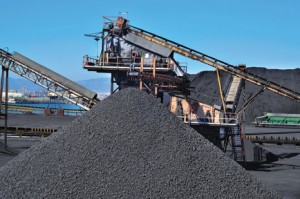By Eric Bowen and John Deskins
After being battered in the second half of 2012, West Virginia’s economy appears to be making a turnaround in 2013, according to the latest economic data.
Overall, West Virginia’s economy has recently shown several notable signs of improvement. Perhaps most importantly, the unemployment rate in our state as of May has fallen from 7.6 percent to 6.2 percent as recently as September 2012, and it has fallen 0.8 percentage points in just the last few months. This drop corresponds to an increase of around 6,100 in the number of employed people in the state since the end of 2012.
West Virginia’s unemployment rate compares well to the national rate of 7.6 percent, although growth in employment lags below the national average. Unemployment is expected to continue its decline through the end of the year, though the recent reductions have already outstripped the latest forecast number.
Optimism over our unemployment situation must be tempered, however, by the fact that West Virginia consistently comes in last among the 50 states in terms of the share of its overall population who either has a job or is seeking employment. The state’s labor force participation rate fell from 54.4 percent to 54 percent in May at the beginning of 2013.
 The Fossil Fuels Industry
The Fossil Fuels Industry
A significant portion of the improvement in the jobs picture is attributable to the state’s mining sector. After a difficult year in 2012, the mining sector appears to be rebounding.
Coal mining jobs fell by almost 3,300 positions over the course of 2012, a drop of almost 13 percent. A few of those losses were offset by gains in the oil and gas industry, which produced 228 new jobs, an increase of nearly 4 percent. The mining sector altogether saw a decline of approximately 8 percent during 2012. These job losses stemmed from a sharp drop in demand for coal throughout the middle of the year. Total 2012 West Virginia coal production fell by nearly 11 percent from the previous year, according to data from the U.S. Energy Information Administration. Southern West Virginia coal fields were hit particularly hard, where production fell by more than 15 percent.
Mining jobs have been returning during the first half of 2013. Overall for 2013, the state has gained nearly 4,000 new mining sector jobs as of the end of May, a gain of nearly 12 percent, and this gain has surpassed recent forecasts. These jobs include those in both the coal and oil and gas industries. Though still down from this point last year, coal production has begun to rise again during the first quarter of 2013. Production in the month of May alone was up 2 percent over the previous year.
 The Exports Industry
The Exports Industry
Exports have been another key driver in the West Virginia economy. The total value of West Virginia exports rose by $2.3 billion from 2011 to 2012, a gain of more than 25 percent. The vast majority of the increase in 2012 came from coal exports, which rose by $2.1 billion, a gain of 39 percent over 2011. Strong export growth is especially good news, given the importance today of export markets as the source of many of the world’s best opportunities for growth.
 The Construction Industry
The Construction Industry
As is the case in many parts of the U.S., construction activity in West Virginia is finally picking up after the significant drop that occurred in conjunction with the recent recession. Housing starts in the first quarter of 2013 were nearly 43 percent higher than a year ago at this time and were up more than 9 percent from the last quarter of 2012. Employment in the construction sector rose by about 230 jobs, a gain of about 1 percent, in the first quarter. Employment is projected to rise another 1 percent by the end of the year.
 The Tourism Industry
The Tourism Industry
Lastly, the state’s tourism industry is projected to produce new jobs over the course of the year. May statistics showed the number of leisure and hospitality sector jobs rose 1,800 from a year ago, a gain of 2.4 percent. According to the latest projections, the number of jobs in tourism will rise 2.4 percent this year overall. One of the major boosts to the state’s tourism industry will come from the Summit Bechtel Boy Scout Reserve, which opened this summer. The 2013 national Boy Scout Jamboree was projected to bring in as many as 50,000 scouts and other tourists.
Forecasting the Future
Despite these economic highlights, much uncertainty remains. In the broader world and national economy, potential threats to West Virginia growth stem from numerous sources, such as the continuing European debt crisis, the potential instability of the U.S. government’s fiscal position and the possibility that the U.S. Federal Reserve might end its aggressive monetary stimulus prematurely. Within West Virginia, threats also exist, deriving from sources such as the potential that U.S. regulatory policy could damage West Virginia coal production and from problems that might stem from revenue shortfalls within the state government. But, at least for now, we can focus on these encouraging signs of economic improvement.








